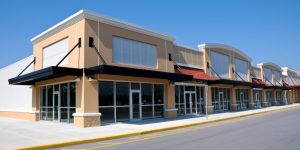The world of retail is drastically changing every day. However, the COVID-19 pandemic has hit the United States economy in ways that many retailers could not have expected. From a surge in unemployment to nationwide store closures, there is much to be concerned about. 
Notwithstanding, retail stores are taking the pandemic in stride — innovating with new solutions that can keep their businesses running safely and effectively. The uncertainty that remains though, is how exactly the retail landscape will look after the pandemic. What trends are likely to stick and what do they mean for our economy? A post-pandemic pattern of consumer and retailer habits may resemble the following.
Consumers Will Shop Locally
Before the pandemic, local mom-and-pop stores were facing fierce competition with retail giants such as Amazon, but it is predicted that the global crisis will push consumers to purchase more products and services locally in the long run. To stimulate their local economies, consumers may be more likely to shop at local, family-owned stores. Such support of small businesses will equate to financial stimuli for friends and neighbors in the retail sector. Local retailers can take advantage of this purchasing shift by marketing unique incentives to their loyal neighborhood consumers and promoting time-sensitive sales to attract new shoppers.
Retailers Will Reevaluate Supply Chains
The COVID-19 pandemic has brought to light many limits within retail supply chains. Rather than focusing on one region for outsourcing, it is wise for retailers to source products from multiple suppliers and areas. Such supply chain diversification provides added security in the event of another economic downturn. However, by sourcing from various countries, retailers may need to invest more in inventory. This, in turn, may drive higher prices for goods and services.
Retailers Will Enhance the Shopping Experience
In an effort to further entice consumers to revisit brick-and-mortar locations, retailors will need to focus on in-store experiences such as product interactions and sample stations. With consumers seeking physical social interaction, experiential selling presents unique opportunities to drive foot traffic. Conversely, retailers may choose to carry less inventory and instead stock items based purely on their demand. Some retailers are even considering transforming their retail stores to continue offering in-store pickup areas and curbside service.
Expert Advice in Times of Need
Although the economic trajectory for commercial real estate is continuously evolving, economists and real estate professionals will be closely tracking the first phase of re-openings. We hope to predict what the commercial retail landscape will look like in these future months. If you are uncertain on which direction to take your commercial real estate investment or are concerned with how the current economic conditions might affect your retail properties, partner with the real estate professionals at Acquisition Consultants. Whether you are looking to modify your space needs, maximize cash flow or stabilize your portfolio, we can assist you with professional creative strategies. To schedule a consultation with one of our expert advisers, contact us today.

